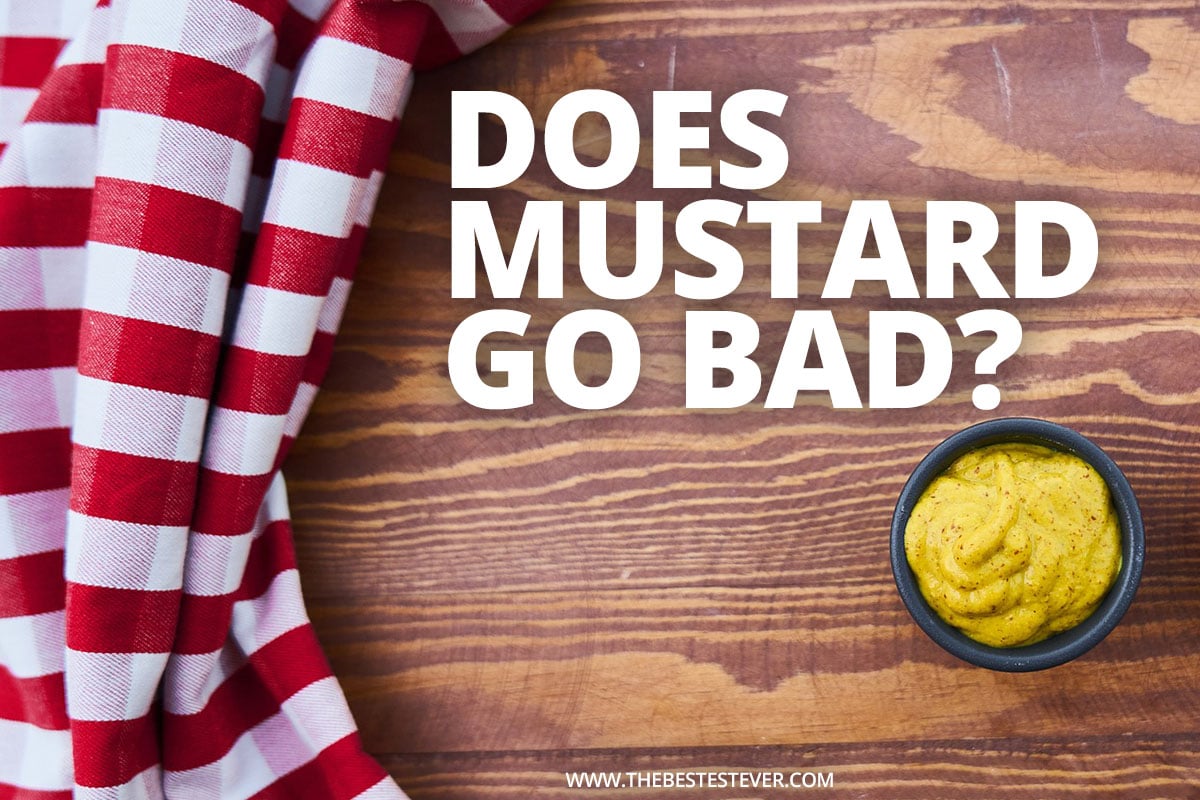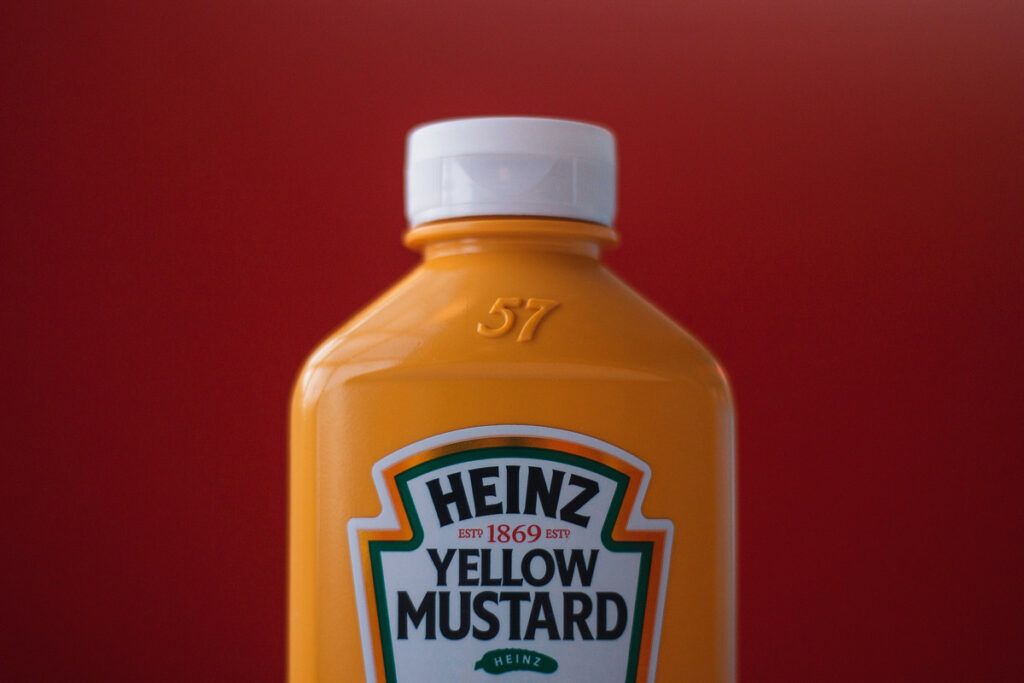
Mustard is a very popular condiment in the west, especially in the United States. From being used as a sauce for hot dogs to being an ingredient in egg salads and vinaigrette, the condiment is extremely versatile.
Like everyone else, you might have a bottle of mustard stashed away in your refrigerator. Chances are you just haven’t gotten around to using it as much as you like. In fact, you might not even remember how long you’ve had it stashed away. So now you’re wondering, does mustard go bad? Interesting question, let’s explore it by checking out the content below.
Does Mustard Go Bad?

Like most foods, mustard will eventually go bad. Certain environmental conditions will also speed up the spoilage process. The expiration date on the packaging however, is not hard and fast. This means mustard can go bad before the date listed, and it can also be good for use up to several weeks after. So, if it can still be edible, what causes mustard to go bad? That question is answered in the next chapter.
Why Does Mustard Go Bad?
Bacterial growth is the number one cause of mustard going bad. Bacteria can be introduced in a number of ways, with dirty utensils being the usual culprit. Constant changes in temperature can also be a factor.
How Do You Tell If Mustard is Bad/Spoiled?
Now that you know that mustard does go bad, and why it goes bad, you might be wondering how do you check the quality of mustard? Well, there are several checks that you can implement. See just a few below.
The Smell Check:
Mustard has a noticeable smell that can be pungent and quite intense. When it goes bad, that smell usually changes to a sour rotten smell that is just as intense. If you detect any changes in smell when opening your mustard, do yourself a favor and toss it out.
Has The Color Changed?:
Mustard generally has a beautiful golden color. If you open the container and there is any variation in color (darkening edges, streaks of white etc), that’s an indication the product has gone off. For most varieties, the color will change to brown when the mustard is no longer edible.
Appearance:
In addition to color changes, the overall appearance and texture of the mustard will change once it’s quality begins to deteriorate. Mustard that’s past its peak will begin to dry out and have cracks on the surface. In addition to cracking, mustard can start to have organic growth or mold on its surface. If you see any sort of growth on top of the mustard, definitely throw it out as it’s not safe for consumption.
The Taste Test:
Once your mustard has passed the smell and appearance tests, the taste test is the final barrier. Not all quality changes will be visible to the eye, which is why a taste test is a good idea. If you taste your mustard and notice any burning, bitterness or acidity, then it has gone bad and needs to be replaced.
You Might Like: Does Ketchup Go Bad?
Does Mustard Need to be Refrigerated After Opening?
Most varieties of mustard need to be refrigerated once they have been opened. Once the package is unopened, then storage on a cool shelf or inside your cabinet should be ideal.
Dry mustard is the only exception to the rule. This should be kept on a shelf or inside of your kitchen cabinet even after you have opened it. Temperatures that are too low will change the texture and quality of dry mustard.
How Long Does Mustard Last?

There is no simple answer to this question, as the lifespan of mustard will depend on the variety you have on hand. Additionally, unopened mustard will last longer than mustard that’s in use. Whether or not it has additives will also impact the expiration date.
For example, when it comes to regular mustard, the typical shelf life is 1 to two years. Once it’s opened, the shelf life is about 9 months or less. Dijon mustard generally lasts longer than the regular variety, having a shelf life of 3 years on average. Once it’s opened though, it will only last a year in the refrigerator.
Honey mustard, like Dijon has a shelf life of about 3 years. It also will last for about a year in the refrigerator once opened. Homemade mustard on the other hand will need to be refrigerated as soon as it’s made. It will only last about 8 weeks.
Best Ways to Store Mustard So It Doesn’t Go Bad?
Location is important. Mustard should be kept in a dark cool place away from direct sunlight and heat. Most pantries will have ideal conditions for storage. Ensure that the storage area is not humid.
Once you open the mustard, ensure that you seal it tightly in between uses. Your open mustard should be stored in the refrigerator, tightly closed. This will prevent the mustard from absorbing the scents from other foods. A tight cap also prevents bacteria from entering the container and building up.
When it comes to storage, another key element is using clean utensils to remove mustard from the container each time. Dirty utensils will cause cross contamination that leads to bacteria growth and ultimately spoilage. Never use the original container for dipping.
Additionally, never scoop leftover mustard back into the original container. Doing this places you at risk of ruining the whole bottle.
What Are The Risks of Consuming Spoiled Mustard?
In most cases, consuming mustard past it’s expiry date will not lead to any major health problems. While the quality would have declined, it could still be good.
Consuming mustard that has gone bad despite what the expiration date is, on the other hand, will almost certainly cause illness or mild food poisoning. Symptoms that you could experience include nausea, committing, diarrhea and skin rashes.
Wrapping it Up
The best by date on mustard is not set in stone, the product can spoil way before that and it can last weeks after too. Storage is key in getting the most from mustard. If your mustard has been exposed to the elements, then definitely use the tips we highlighted above to check the contents first before adding it to your dishes.